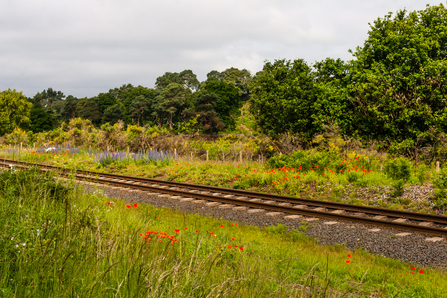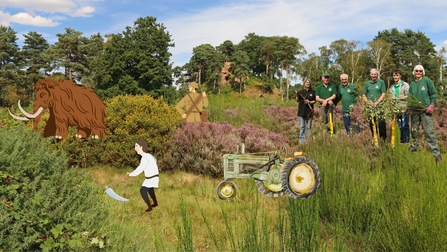When recently tasked with the role of providing historical information to a group visiting Dropping Well Farm and its surroundings, the first question I asked myself was "where do I begin?" Having realised that the present character of the area has been shaped by so many different influences, both natural and human, I decided to look at lots of different sources of reference, ranging from books to reports to individual stories. All highlighted the importance of this area of increasingly rare heathland habitat and the many uses of this land over time.
Over the last 200 years it is said that 85% - 90% of these unique heathland habitats in the UK have disappeared due to agriculture, development or lack of management. Fortunately, in the area around Dropping Well Farm much of the land is being restored to previous periods in its history, when the landscape of Worcestershire was very different from that of today.
Through extensive research, archaeologists have concluded that Worcestershire’s landscape was generally very open for long stretches of time, even during periods considered to be an ‘ice age’. It was characterised by grassland, marshland and sandy heathland grazed by large herbivores, such as bison, woolly mammoths and even giant elephants! On heathland these animals, together with the inevitable occurrence of wild fires, would have provided the clear, well-drained ground required for the establishment of iconic plant species such as heather, gorse and broom. These thrived, especially on the relatively poor sandy soils and open sunlit environment. Any pioneering tree species such as oak and silver birch, which would inevitably have ‘taken over’, were controlled by the large grazing animals.
From grazers to people
As human activity began to grow and dominate, many of the large herbivores disappeared, perhaps through cooling of temperatures whilst others were virtually hunted to extinction. In Worcestershire, it is thought that even as early as 6000 years ago, much of the land was used for some form of agriculture, either growing crops or grazing animals. Similar to other parts of the country, Worcestershire’s heathland proved a useful resource for millennia. It was used for grazing and feeding livestock, providing bedding for animals and people and its vegetation could be burnt as fuel. Also, as in the case of Dropping Well Farm, large areas were used for growing crops – often on a rotational basis. However, from records it is clear that this was not always a great success due to the poor quality of soil and even with the addition of fertilisers, yields were below expectations even as farming intensified and industrialisation occurred.
Records from the mid 19th century show sheep and/or cows were kept at Dropping Well Farm and much of the land was given over to rough, temporary and permanent pasture. Crop growing was limited due to poor soils, a fact that was particularly highlighted during the national farm surveys conducted in the midst of World War Two when every inch of valuable land was required for growing crops to feed the nation. Until fairly recently, most of the residents of the farm were tenant farmers or agricultural labourers, a variety of farm workers and families. All seem to have struggled to make a good living from the land.




